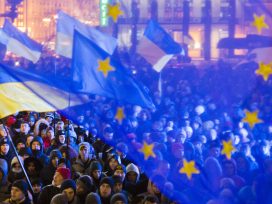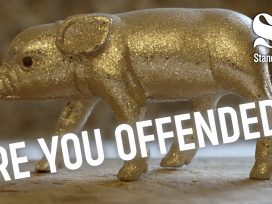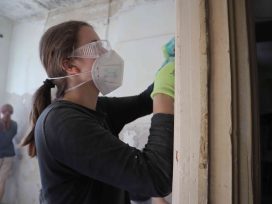Afina, Usein, Maria, Jasim – a Greek Roumean, a Crimean Tatar, a Swede and a Turkish-Meskhetian, all from Ukraine, all living on the edge – when the attack on nationals, labelled minorities, is life-threatening, calling out the names of those who are in danger recognizes their plight and diversity.
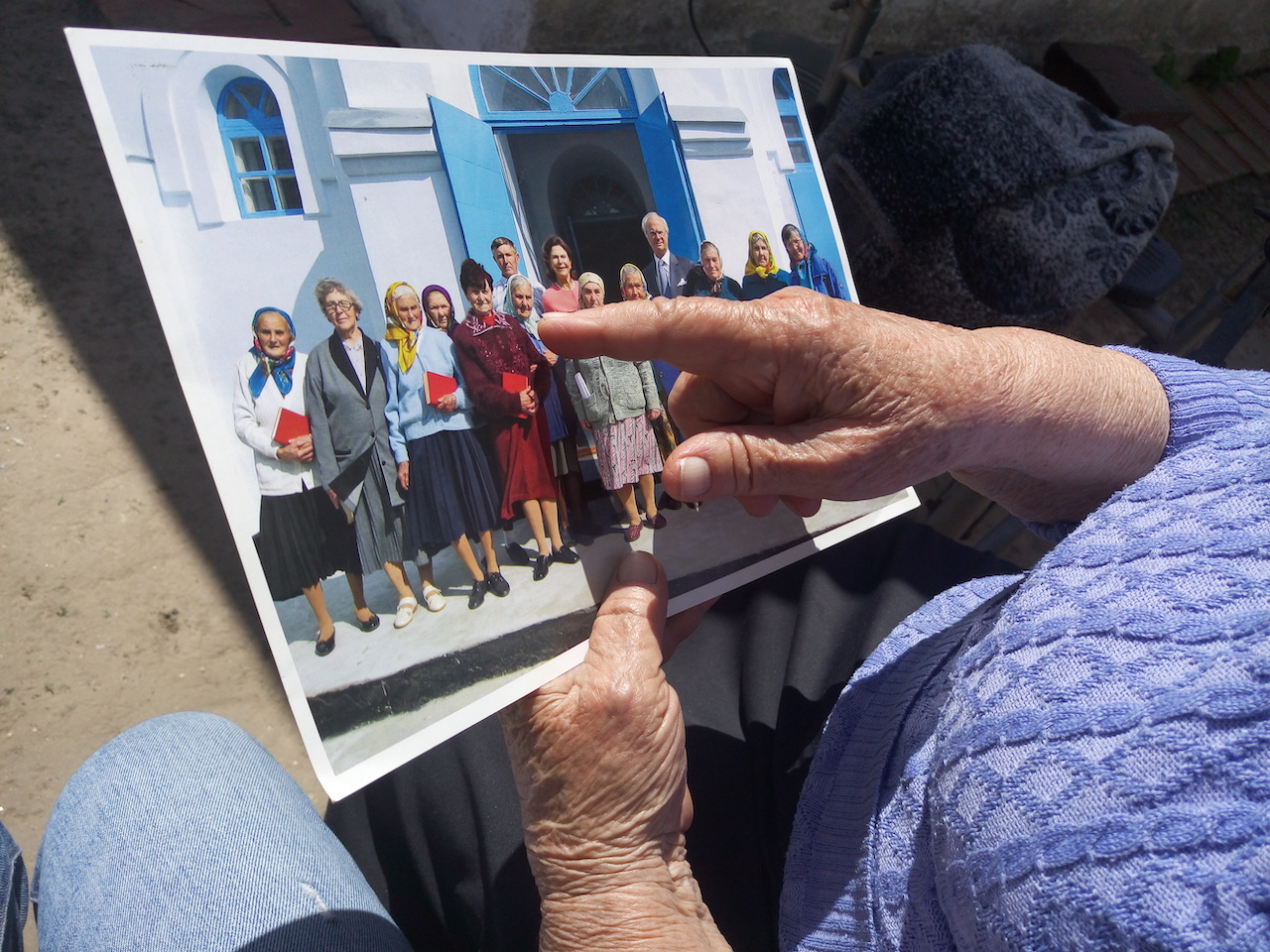
Swedes in Ukraine. Image courtesy of author.
Afina
On my way back from a long trip in the south of Ukraine, I asked Afina to find time in her tight schedule for a conversation. An elegant, black-haired woman with a Greek profile came out to meet me in one of Kyiv’s cafés.
She is an activist and a volunteer, who ran in the 2015 local elections for the Syla Liudei (The People’s Power Party) and dreamt of change in Mariupol.
Sharing her name with the ancient Greek goddess, revered as the patroness of martial arts, wisdom and crafts, is in some way obliging. At least that’s how Afina has always felt.
She is Roumean, a group of North Azovian Greeks, who, along with Urums, settled in Ukraine. Twenty years ago, more than 75,000 people in the Donetsk region called themselves Greek.
When I came to Mariupol to write about North Azovian Greeks, I stayed at Afina and her mother Olympiada’s place. I spent the night among rare books, photographs and portraits of Roumean artists.
Eduard, Olympiada Khadzhynova’s husband, has dedicated his entire life to the history and culture of the Greeks of the Azov region. He has collected folklore, recorded songs and wrote a dissertation on the subject.
In this house, I tasted real ‘plakopsy’, Greek flatbread with spring onions cooked only in the Azov region. And I stocked up on the recipe for ‘shmush’, a Greek Christmas pie.
That was back in 2019. My car had broken down a few kilometres from Mariupol, so I stayed longer. The Russian military and separatists were regularly shelling the neighbouring village of Talakivka. Already back then, the war was breathing down the Roumeans’ necks.
As I got familiar with the city, I saw how significantly Mariupol was rebuilt after the fighting in 2015. I was fascinated by this city because of the new public transport, which even Lviv would envy, the well-designed infrastructure, parks and squares.
Russia’s full-scale attack on Ukraine has changed everything. As I’m writing this, I have a lump in my throat due to despair, regret for destroyed human destinies and incredible rage.
After the city’s occupation, Afina Khadzhynova didn’t appear online for more than two weeks. I checked Messenger every day to see if there was a green light next to her name.
Russians are destroying the city, killing civilians. I tried to imagine how hard it would be for 84-year-old Olympiada to spend a long time in the basement. There’s no drinking water, electricity or gas in Mariupol.
When, after a while, a green light appeared in our chat window, the lump of pain eased a little and it became easier to breathe. I crossed myself, even though I wouldn’t call myself a zealous Catholic.
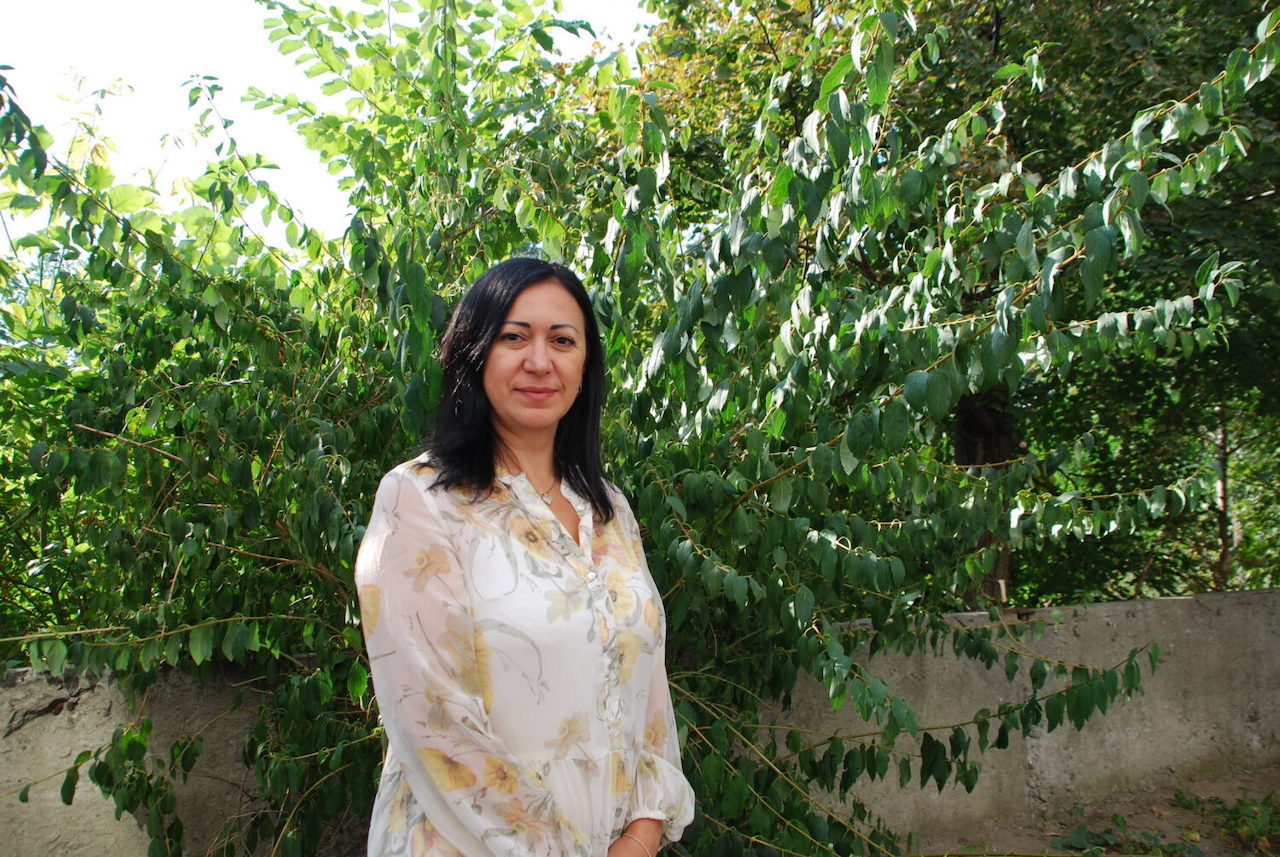
Afina, image courtesy of author.
Afina wrote the same after successfully evacuating: ‘I’m not a believer, but I prayed a lot in Mariupol,’ she posted to the online magazine Graty (The Lattice).
She also said that when there was no electricity and gas. Residents built mangals near houses and braziers for fires. They quickly ran out of firewood and started cutting down trees in the yards.
‘People took out everything they had in their fridges. Some porridge was enough for my mother and me,’ said Afina. ‘We ate what we could. Tea or coffee three times a day was a must.’
Afina also said that there was a problem with the drinking water: ‘When stocks of tap water ran out, people went to the well in the park, carrying supplies from there. Usually, it took several hours waiting in line, with mines often whistling overhead.’
For several weeks women slept in their clothes; there was no heating in the houses.
Eventually, Afina and her mother dared to evacuate. They saw that even the strongest couldn’t withstand Russian barbarism. Olympiada had to drive through an avenue under constant bombardment to leave the city.
‘I prayed a lot then, too,’ Afina admitted.
Under fire, they managed to get first to Zaporizhzhia, then to Poland, and later to Cyprus.
These quotes were taken from her social media posts and several publications, not from interviews; I remember Afina’s tears when she spoke about the war and shelling of the Skhidnyi (Eastern Quarter) in 2015, and I didn’t dare rub salt into the wound. There are no words in my vocabulary to describe the grief of these friendly, educated and sincere Roumeans.
Afina’s two small nieces remain in Mariupol. Afina dreams that she is talking to them on the phone. But then she wakes up.
On the eve of war, Afina bought an apartment in Hostomel, which the Russians later bombed. She spent all the money she had saved throughout her life to pay for that apartment. Her life, family photos and memories were left there like a unique Roumean archive. There’s a library back in Olympiada’s place. We can only guess at what might remain; Russians are wiping entire cities off the face of the earth.
This is the memory of the Roumean people, which the Russians have repeatedly tried to destroy. On the orders of Catherine II, the Roumeans and the rest of the Christians of the Crimean Peninsula were moved from the Crimean Khanate to the Russian Empire from 1778 to 1780. They were deported.
The Russian Empire promised the Roumeans ‘rivers of milk and honey’. Everything seemed seamless. Vast uninhabited lands were awaiting their new owners. But the elderly, women and children had to walk for months; a third of the migrants died on the way. And those that finally arrived saw only a bare steppe.
The local administration was unable to provide housing for these displaced people. The lucky ones shared a house with two or three more families. The rest of the Greeks lived on carts and, when they lost hope, began to make dugouts.
‘There was nothing here, just wildland,’ recalls Olympiada Khadzhynova from family legends. ‘My parents told me that people dug trenches and covered them, and they lived in them for two years until they could finally build a house.’
On the coast of Meotyda, as the Ancient Greeks called the Sea of Azov, there were settlements with Taurian-inspired previous names: Chersonese, Yalta, Maloyanisol, Urzuf, Anadol, Constantinople, Chermalyk.
The Greeks were hardworking. They painstakingly built ‘Marianopol’, the City of Maria.
In 1937 the Soviet Union tried to exterminate the Greeks for a second time. Nikolai Yezhov, commissar from the People’s Commissariat of Internal Affairs (NKVD) of the USSR, signed the sinister directive 50215, which stated that ‘Greek intelligence is conducting active espionage and sabotage and insurgent work in the USSR.’ Therefore, it was decreed that ‘anti-Soviet nationalist activity’ should be stopped: ‘On 15 December, all Greeks suspected of espionage, sabotage, insurgency and nationalist anti-Soviet activities should be arrested simultaneously in all republics, provinces and oblasts.’
According to the historian Ivan Dzhukha, more than 20,000 Greeks had been arrested for ‘counterrevolutionary activities’ in the Soviet Union by May 1938. 93% of them were shot.
Nowadays, Russia is exterminating the North Azovian Greeks for a third time.
But as Afina herself said, ‘the Russians can destroy our cities but not our memory’.
Usein
A tall figure, with a long beard, big arms, expressive grey eyes: Usein Tahun is a Crimean Tatar, a mullah of the city of Novooleksiyivka in the Kherson region.
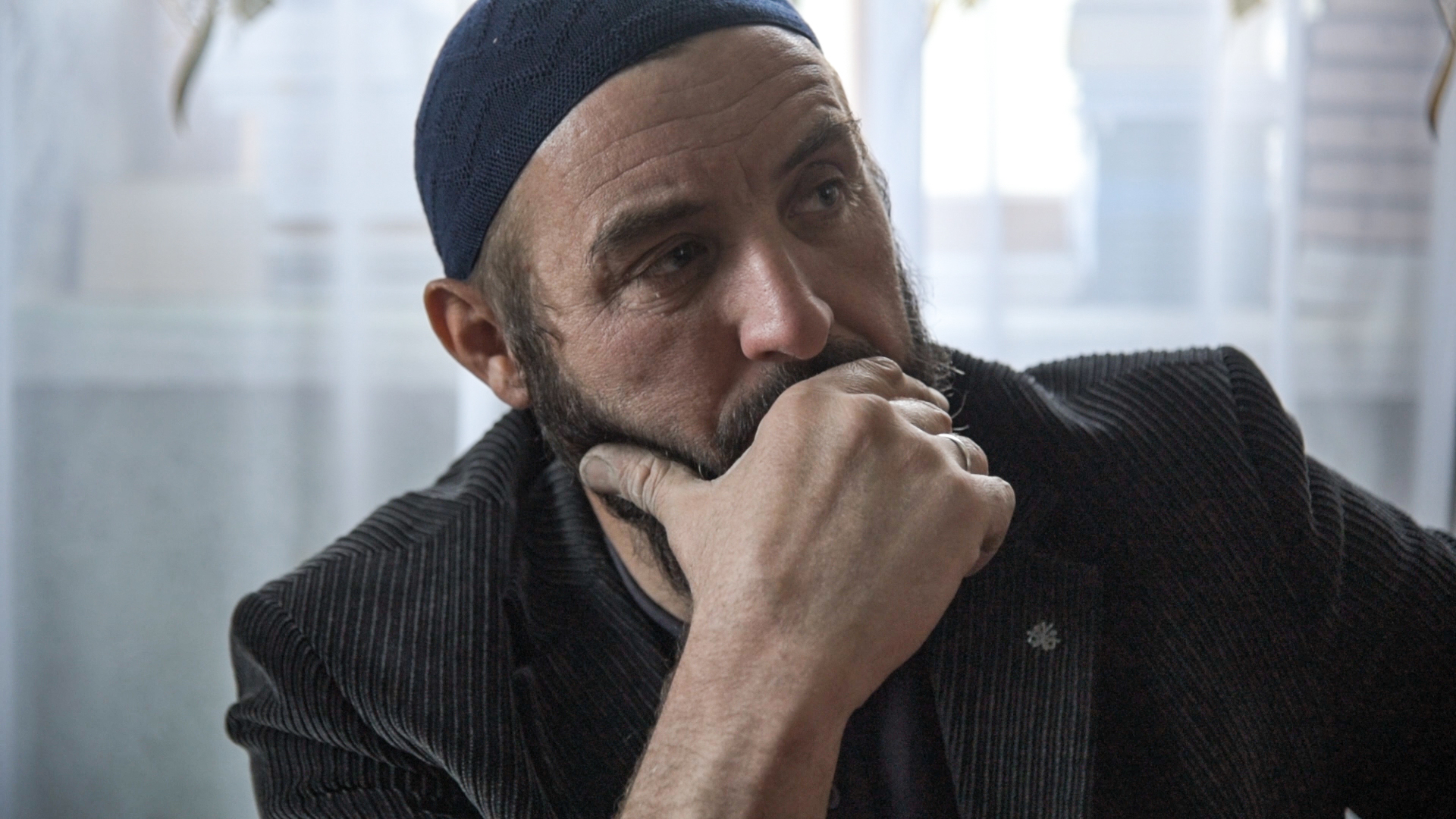
Usein, image courtesy of author.
In 1944 Stalin forcibly deported Crimean Tatars from Crimea. ‘So many people died on the way!’ During a conversation in the mosque, he told me that they were thrown out of cars and not allowed to be buried.
According to official figures, 190,000 Crimean Tatars were deported to remote regions of the Soviet Union, from the Northern Urals to the Central Asian republics. A self-census conducted by the Crimean Tatar National Movement makes the figure more than 420,000.
‘Bodies were torn apart by wild animals,’ Usein said, sharing his family’s story. ‘In Uzbekistan, my mother had to walk four kilometres every day to school; there were no shoes, nothing.’
The deportation of 1944 was a tragedy for the Crimean Tatars. People were annihilated by the inhumane conditions created for them. Even when the Khrushchev Thaw provided the long-awaited permission to return, Usein’s parents, like many other Crimean Tatars, failed to win back their home in Crimea.
The Crimean Tatars were not allowed to return to their homes, and new houses were often destroyed. They couldn’t find jobs: it didn’t matter if you were a woman or a man with experience and skills, each Crimean Tatar was refused.
Many people sought refuge in Novooleksiivka. This urban-type settlement is the largest Crimean Tatar settlement in the Kherson region: of the ten thousand inhabitants there, more than four thousand are Crimean Tatars.
After the occupation of Crimea, hundreds of other migrants arrived in Novooleksiivka. As the closest station to the peninsula, Novooleksiivka became a shelter for those forced to leave their homes.
‘The mosque was the first place I came to,’ said Riza Medzhytov, a migrant from Crimea. ‘It was calm and peaceful there.’
Asan Aliyev, the first chairman of the Kherson Regional Majlis, remembers how people from occupied Crimea rushed there. He recalls pilaf and shurpa cooked in the mosque for five hundred people.
He also recalls Chongar at the most challenging moment after the seizure. More than a thousand Crimean Tatars came to express their position. They were a living wall.
Currently, 172 Crimean Tatars are political prisoners and being prosecuted for criminal ‘cases’ during the occupation of Crimea. The Crimean Tatar Resource Centre constantly updates its information as the number of prisoners increases.
People are being intimidated and detained. Homes are being raided. The Russian Federation has introduced criminal liability for those refusing to fight in Ukraine, which also applies to Crimea inhabitants. Medical personnel in occupied Crimea are likely to be ‘mobilized’ and sent to ORDLO, the temporary occupied territory.
Crimean Tatars were deported in 1944 and not allowed to return home. Those who managed to return after the deportation had to flee again from the Russian invasion of 2014. In 2022 Russia caught up with those who found refuge in the Kherson region. It wrought devastation and death.
Maria
People from fourteen different nations live in the village of Zmiivka, one hundred kilometres from Kherson. Among them are Swedes, descendants of those immigrants who arrived in the south of Ukraine in 1782 from the Dago Island on Catherine II’s request, sent to develop the lands.
More than a thousand people set out on an arduous road almost 3,000 km long. Less than five hundred reached the destination over the Ukrainian steppes.
‘When my ancestors arrived, there was nothing here,’ says Maria Malmas, a Swede from Zmiivka. ‘They dug tenches and lived in them. The Swedes managed their households on their own; none of them had any servants.’
However, in 1930 the Soviet authorities began to ‘dekulakize’ the Swedes. ‘Both my grandfathers were taken away and sent to Kherson, where they were told to sign that they were kulaks. But they were not rich peasants with some servants; they were masters of themselves!’
According to the district committee of the Communist Party, as of 1 March 1930, one hundred per cent of farms had to be collectivized. ‘We had less than two months left: not an hour, not a minute was to be wasted; the countdown had begun,’ residents were told.
Maria Malmas’ grandparents had their property confiscated.
In 1932 a famine broke out in the region.
During World War II, the Nazis deported the Swedes to Germany.
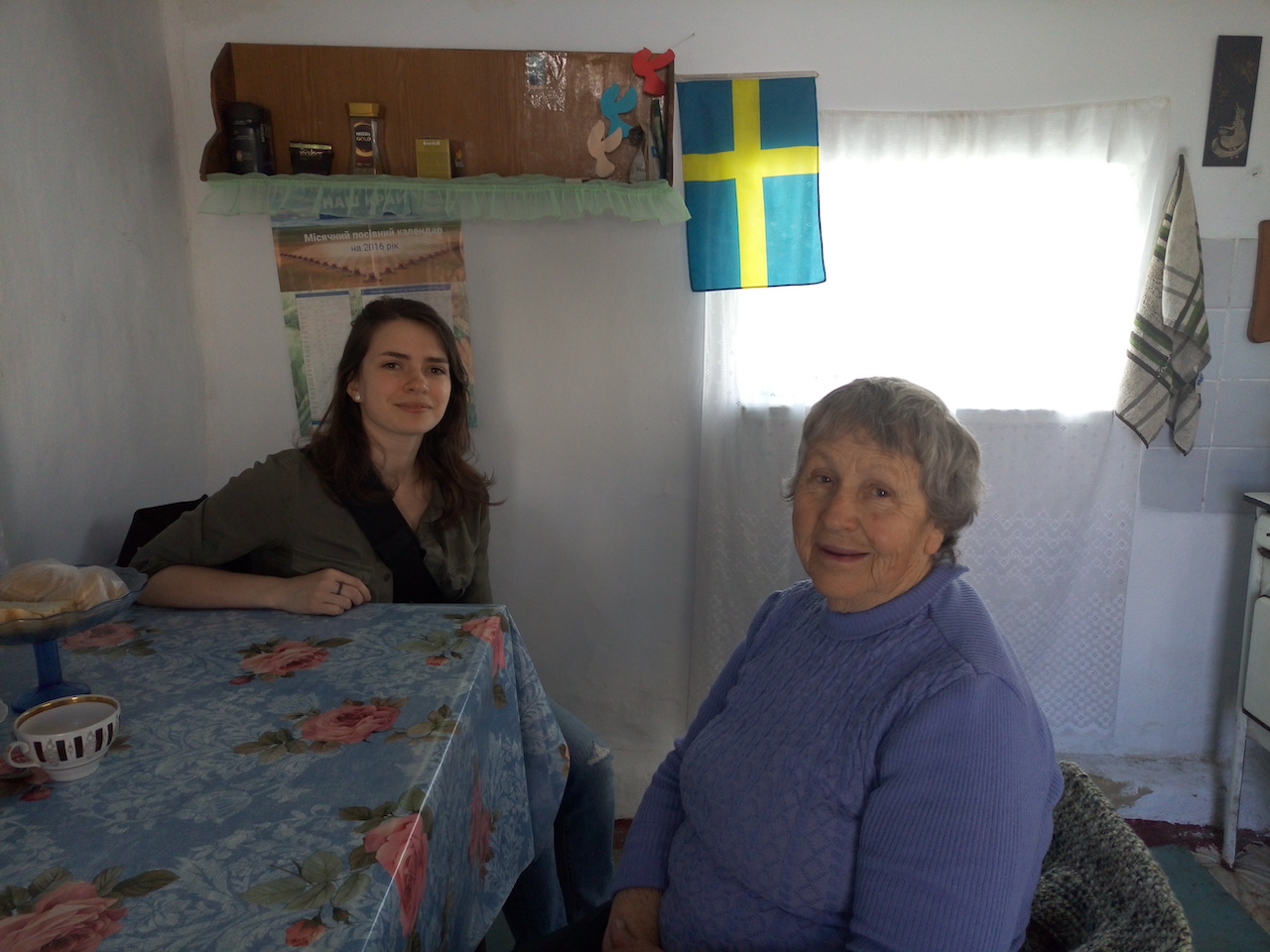
Maria, image courtesy of author.
After the war, the Swedish family was sent back – not to Zmiivka but to Vorkuta in Russia. Kherson Swedes, like the Volksdeutsche, were sent to Russia’s northern Komi region.
NKVD officials were tasked with ‘transforming disloyal elements into conscious builders of socialist society.’ The Swedes were sentenced to ten years.
In her memoirs, Emma Malmas, Maria’s mother, wrote that when they arrived in Komi, it was fifty degrees below zero.
‘We were not dressed for the weather; the children didn’t have winter clothes. I realized that my kids would die there. We lived in dugouts just like other prisoners.’
During the first winter in Komi, Emma Malmas lost two children. Elsa died three weeks after their arrival. Six-year-old Anna passed away later.
When the family returned to Staroshvedske in 1947, the ‘second famine’ began.
The children were given aprons to walk in the field and sow. They scattered grain in the holes.
‘The brigadier stood on the side and watched. God forbid putting a single grain in a mouth!’ Maria said.
I can’t go on anymore.
***
In 2022 the Russians occupied the Kherson region again – temporarily.
Jasim
Jasim Yasinovych Iskondarov is an elder of the Turkish-Meskhetian community in the village of Vasyukivka, near Bakhmut. He has lived with his family in the Donetsk region for thirty-two years. There they found refuge from the pogroms in Uzbekistan, where his parents moved after deportation from Meskheti in 1944. The house has become a home for Jasim’s three children and fifteen grandchildren.
‘Yes, my parents were born in Georgian Meskheti,’ said Jasim. ‘But in 1944 Stalin decided to evict us because we were suspected of collaborating with Turkey.’
The Soviet authorities deported the Meskhetian Turks to Central Asia, mainly Uzbekistan.
But there was no peace there either. The events of 1989 are called the ‘Fergana massacre’.
In Tashlak, a group of Uzbeks went to the neighbourhoods where Meskhetian Turks lived, set their houses on fire and severely beat their owners. The next day, homes burned not only in Fergana and Tashlak but in Margilan and other settlements where Meskhetian Turks lived, too.
‘They came to us in Samarkand and told us that either we leave or face something like Fergana,’ Jasim recalled calmly. ‘I remember when we realized that there would be no life for us here, and this is when we left searching for a home.’
They went to the Donetsk region.
Eight men decided to move their families there. The journey lasted more than four days by train, with bags, children and feelings. They drove through Volgograd and Artemivsk, now Bakhmut.
‘It was hard,’ Jasim shared. ‘They gave ten thousand rubles to each family. But the USSR collapsed and there was enormous devaluation. I received a check and no money! The money disappeared. I had just finished building a house in Uzbekistan and only lived in it for a month! A single month! In a house I spent all my life building…’
***
In the beginning of April, I called Jasim to hear his voice. I was worried about whether he would pick up a call to his Ukrainian cell phone number.
But I remembered that the Meskhetian Turks remained in Vasyukivka even after the fighting in 2015. Although Turkey offered help, they did not want to leave – too many relocations per generation.
‘Do you remember me?’ I asked after a long series of beeps.
‘I do remember. I do. Olesinka. Yes,’ Jasim answered sincerely.
‘Are you still in Vasyukivka?’
‘I’m still here, but I’m going to leave tomorrow or the day after tomorrow.’
‘Are you going to Turkey?’
‘No, I’m not leaving Ukraine yet. I’m going to Zhytomyr. My eldest son is in Debaltseve, my eldest daughter in Turkey, my middle daughter went to Dnipro and the youngest daughter is in Kherson. That’s how we’re scattered.’
‘What about Vasyukivka now?’
‘There is no fighting yet, Olesiu. But you can hear it. Lysychansk, Severodonetsk, Rubizhne are fifty kilometres away from us. Popasna is forty kilometres away. There is only one road left,’ Jasim said quietly. ‘I will definitely leave the day after tomorrow.’
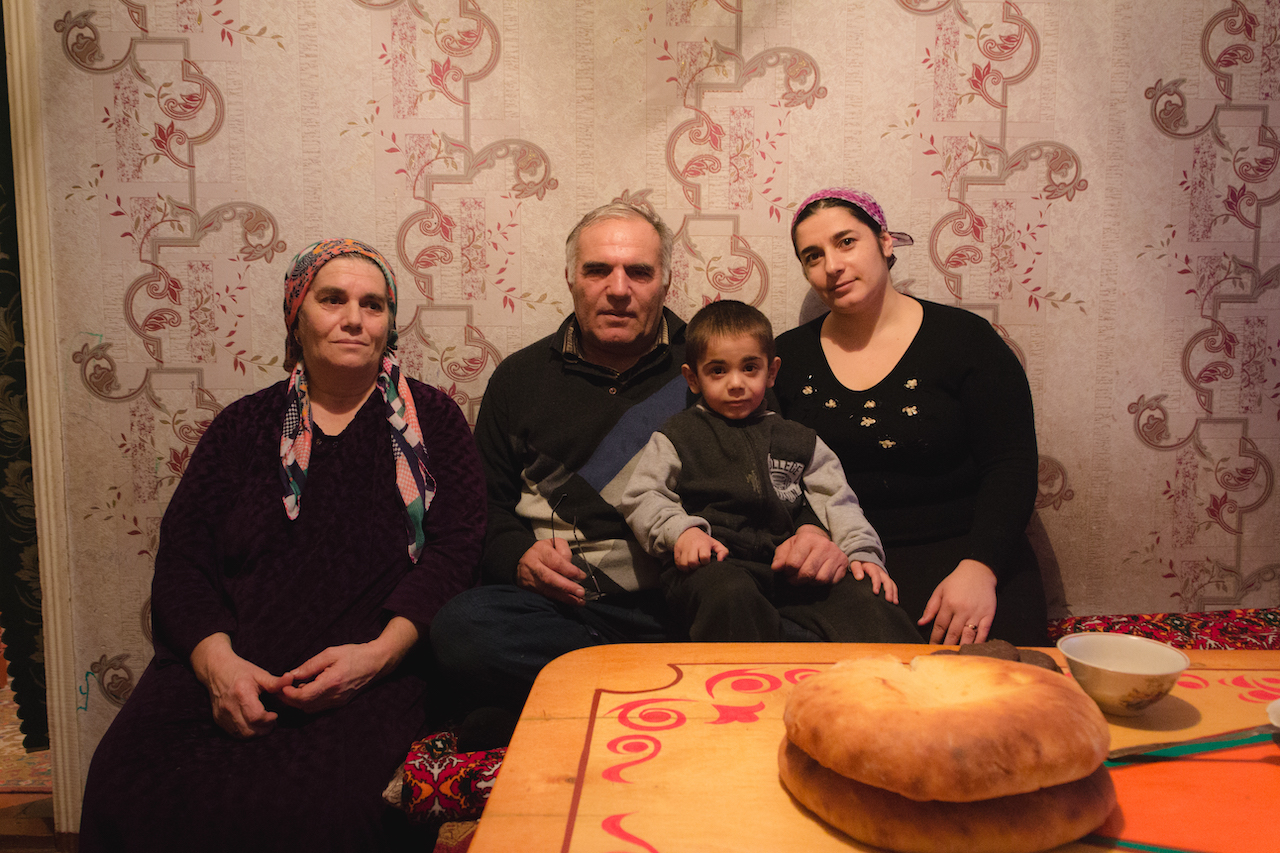
Jasim and family, image courtesy of author.
***
I can’t go on anymore.
I could write about how Slovaks were invited to Volyn back in the USSR and deceived afterward. How Romanians cried during World War II when they heard the Russians coming. How the Hungarian settlement was broken in half like a loaf of bread: the Soviet Union ceded the eastern part, and the western part went to the Czechoslovak Socialist Republic. How Bessarabia, where the Gagauz live, was thrown from hand to hand like a hot brick in the twenty-first century and how the Gagauz suffered from repressions and mass starvation. How Germans and Poles were deported from Ukraine.
The story is endless.
When I was asked to write an essay before the war on national diversity in connection with the 30th anniversary of Ukraine, I thought I would focus on how rich the ethnic landscape is. I was going to underline that we should protect other nationals, which we mistakenly call ‘minorities’. What is needed is more funding for cultural centres and literary festivals, where readings in different languages could be conducted. I wanted to say that we should rethink the past to understand Ukraine better.
I would write about my years of travel experience. Researching the topic of national minorities, I had covered more than 11,000 km to speak with representatives of different nations in Ukraine. I would share how I had changed by writing about ‘Our Others’. And about how I wanted to go further.
In my literary reportages, I wrote about evicted nationals. About the horrors of World War II. About repressions and genocides. About the search for a home. It seemed that this could never happen again.
But it can. Do you trace the one who does it all over again?
In this war, the rotten remnants of the Stalinist regime and the sick imperialist fantasies of Russians zombied by propaganda have come to the surface.
The ghosts of the Soviet Union rise from their graves and poison our land, leaving rivers of blood.
The crimes of the Soviet Union were not investigated, including those against national minorities in the USSR. We did not have Nuremberg Trials. Evil deeds went unpunished. People were treated as commodities on the sorting line.
Russians have forcibly deported tens of thousands of people from the occupied territories of the Azov, Donbas, Slobozhanshchyna and Sivershchyna to Russia so far this year. Expulsions, as in World War II, are taking place. How much more does one need to shout about this?
Because of impunity, the Russian chauvinist machine is annihilating Ukrainian people once again. Official Russian media write about ‘de-Ukrainization’ and ‘denazification’, methods that attest to nothing less than genocide.
They consider all other nationals living in Ukraine Ukrainians because they support the state. Death and destruction are being wrought on not only ethnic Ukrainians but also Greeks, Crimean Tatars, Swedes and Meskhetian Turks.
The poet Ostap Slyvynsky, quoted in the preface of my book, wrote ‘it is impossible to call another to dialogue without knowing his name.’ These names are our history of ethnic diversity.
I say them aloud and pray – for God’s sake and the world’s sake – save them.
Save them.
Published 30 May 2022
Original in Ukrainian
Translated by
Kseniya Kharchenko
First published by Eurozine (English version)
Contributed by The Institute for Human Sciences (IWM) © Olesya Yaremchuk / The Institute for Human Sciences (IWM) / Eurozine
PDF/PRINTIn collaboration with
In focal points
Newsletter
Subscribe to know what’s worth thinking about.
Related Articles

Under the aegis of the Council of Europe, a ‘core’ group of countries have been moving forward with plans for a tribunal capable of prosecuting the Russian leadership for the crime of international aggression. The US administration’s switch of allegiance now puts these plans at risk, writes Gwara Media.
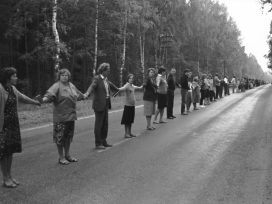
The fall of the Berlin Wall, and not the human chain across the Baltics, is emblematic of 1989. But what if this show of unity had become iconic of communism’s disintegration? Could acknowledging Eastern Europe’s liberation positively reframe what Russia otherwise perceives as loss since the Soviet Union’s demise?

